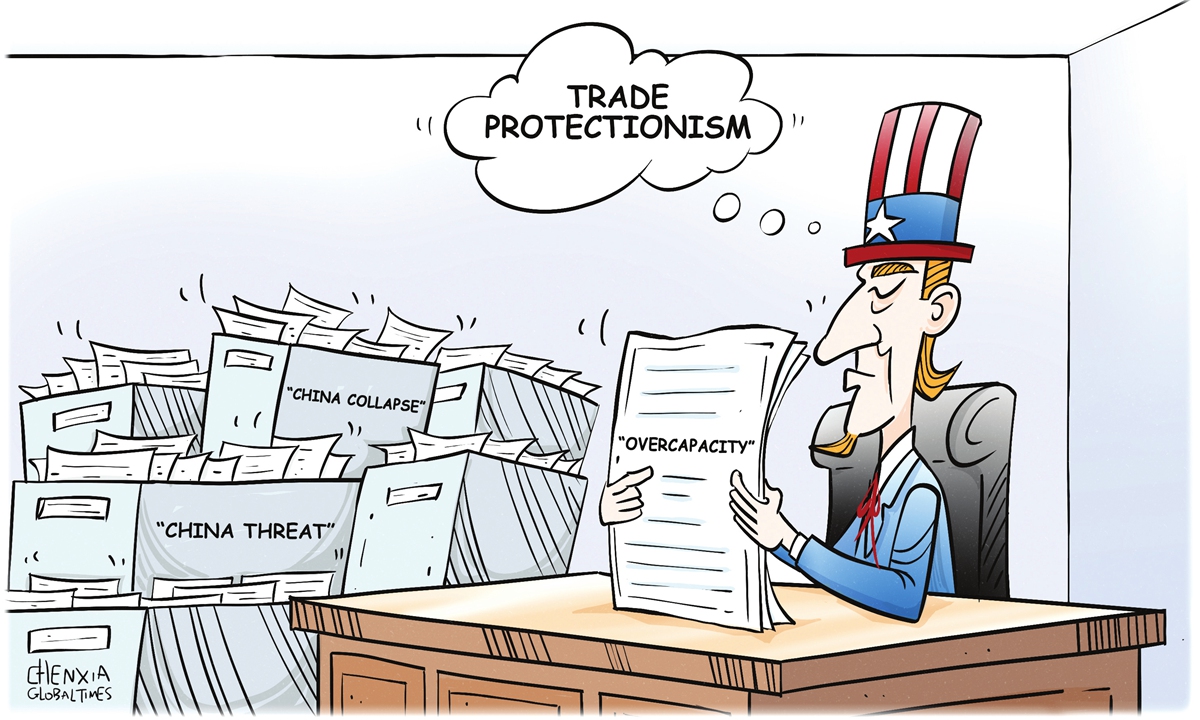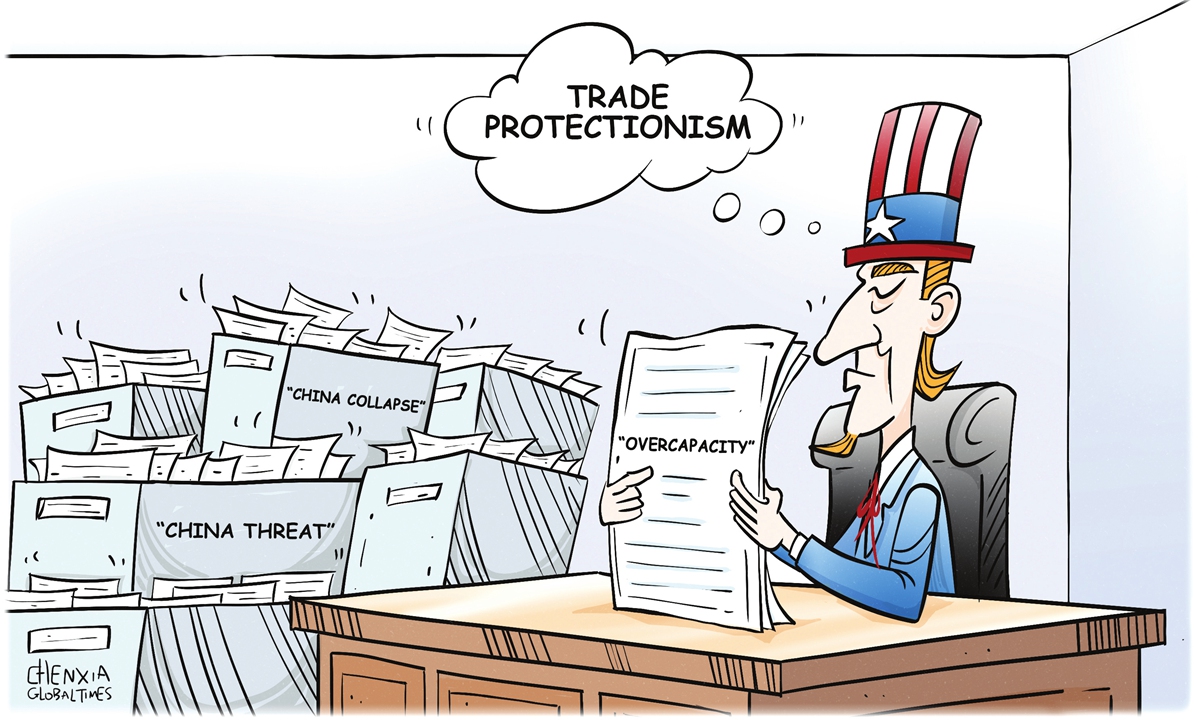
Over-protectionism. Illustration: Chen Xia/GT
Recently, the West has been unreasonably hyping up the false narrative of “overcapacity” in China. Even the IMF warned on Tuesday that China’s policies that boost supply would worsen overcapacity, reinforce deflationary pressures, and potentially provoke trade frictions.
While the IMF doesn’t explicitly mention any specific industry, it is probably referring to China’s new energy industries in light of recent US pressure on green Chinese products. Yet, whether or not China has excess capacity should be determined by economic rules and facts, not political agenda led by the US.
The current global distribution of production capacity is a result of the combined effects of industrialization and market-based economic activities over the past few decades. Cooperation based on comparative advantages is crucial for optimizing the resource allocation of global factors, also an important approach for improving productivity and well-being among countries.
From the perspective of economic principles, equating fluctuations in supply and demand with excess capacity goes against the normal rules of the market economy and actually works counter to the rationality of international division of labor and economic globalization. If a country with supply exceeding demand is recklessly considered to have excess capacity, then all export economies in the world, not only China but also the US, have overcapacity issues in terms of their exported products.
In this sense, the narrative of “overcapacity” and criticisms of industrial subsidies are merely rhetoric fabricated by the US to hinder China’s competitiveness.
China’s economic advantage in its “new three” products – new energy vehicles, lithium-ion batteries, and photovoltaic products – stem from its competencies and are shaped through full market competition, rather than subsidies from the government. While the US accuses China’s industrial policy of violating international regulations and worsening overcapacity, the scale of American subsidies to new energy industries is far greater than in other countries, as the CHIPS and Science Act and the Inflation Reduction Act have showed. For example, the detailed rules of the Inflation Reduction Act stipulate that only electric vehicles assembled in North America are eligible for a maximum subsidy of $7,500 through federal tax deductions, which is a blatantly discriminatory subsidy law.
By comparison, China’s industrial policy adheres to the principles of market economy and fair competition. For instance, in a statement published on its WeChat account on Wednesday, the National Development and Reform Commission said that China plans to introduce additional measures to support the development of the new energy vehicles. These measures include fostering industrial innovation through scientific and technological advancements, encouraging enterprises to increase investment in research and development, and facilitating the optimization and restructuring of the new energy vehicle industry. Moreover, China will remove all restrictions on foreign investment in manufacturing, inviting global auto companies to participate in the Chinese market and industrial chain to benefit from the advancements in new energy vehicle technology.
In fact, China’s competitive new energy products have created huge opportunities and support for the global industries and markets. Its technological innovation in new energy vehicle sector presents significant development opportunities for global auto industry. Also, China is the only country in the world that has all the industrial categories listed in the United Nations industrial classification system, including 41 industrial categories, 191 medium categories and 525 subcategories. And its efficient industrial system has played a crucial role in maintaining stability of the global auto supply chain.
Furthermore, China is a major driving force behind the world’s rapid expansion of renewable power generation capacity. China’s installed capacity of renewable energy exceeded 1.45 billion kilowatts in 2023, accounting for more than 50 percent of the country’s total installed power generation capacity, according to data released by the National Energy Administration. Power generated from renewable energy sources such as wind and solar power now accounts for more than 15 percent of China’s total electricity consumption.
China has always been committed to promoting high-level opening-up and offering opportunities for market access to other countries, with the aim of achieving mutually beneficial results. And it is hoped that all parties could be engaged in rational discussions based on facts and economic principles when it comes to green development, rather than resorting to baseless accusations and attacks.
The article was compiled based on an interview with Jin Ruiting, researcher at the Academy of Macroeconomic Research of the National Development and Reform Commission. [email protected]
